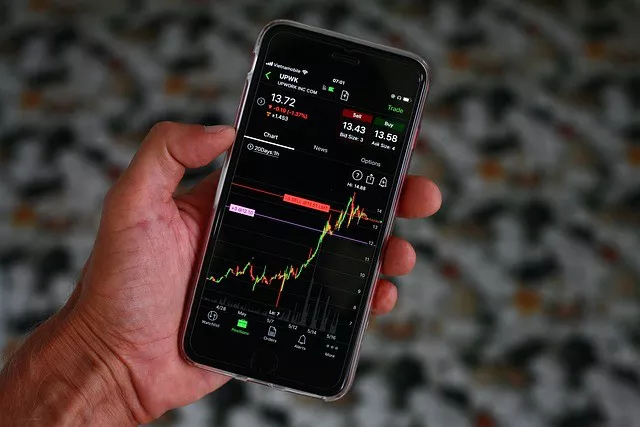The unemployment rate is a crucial economic indicator that provides valuable insights into the health and stability of a country’s job market. Governments, policymakers, businesses, and analysts closely monitor this metric to gauge the overall economic well-being and make informed decisions. In this article, we will delve into the unemployment rate definition, its significance, calculation methodology, and its impact on various stakeholders. Understanding the nuances of the unemployment rate empowers us to comprehend its broader implications and the dynamics of the job market.
Defining Unemployment Rate
The unemployment rate is a percentage that represents the proportion of the labor force currently unemployed and actively seeking employment within a specified period. The labor force includes individuals who are employed and those who are actively looking for work but are yet to secure employment. It excludes those who are not in the labor force, such as students, retirees, and individuals who have chosen not to participate in the job market.
The unemployment rate serves as a vital economic indicator, reflecting the balance between the demand and supply of labor in a given economy. A high unemployment rate can signal economic stagnation, while a low rate may indicate a robust job market.
Types of Unemployment
Understanding the various types of unemployment is essential to interpret the unemployment rate accurately. The following are the primary types of unemployment:
Frictional Unemployment:
This type of unemployment occurs when individuals are temporarily between jobs or are new entrants into the job market. It is considered voluntary and short-term as workers search for better opportunities that align with their skills and aspirations.
Structural Unemployment:
Structural unemployment results from long-term changes in the economy, such as shifts in technology, changes in consumer preferences, or the decline of certain industries. Workers facing structural unemployment often require retraining or relocation to secure employment in different sectors.
Cyclical Unemployment:
Cyclical unemployment is directly linked to the business cycle and economic fluctuations. During periods of economic downturn, businesses may reduce their workforce, leading to a rise in unemployment. Conversely, during economic upswings, job opportunities increase, and the unemployment rate declines.
Seasonal Unemployment:
Seasonal unemployment is associated with industries or occupations that experience regular fluctuations in demand due to seasonal factors. Examples include agricultural workers during non-harvest periods or tourism-related jobs during the off-season.
Calculating the Unemployment Rate
The unemployment rate is calculated by dividing the number of unemployed individuals by the total labor force and then multiplying the result by 100 to express it as a percentage. The formula can be represented as follows:
Unemployment Rate = (Number of Unemployed / Total Labor Force) × 100
Government agencies and statistical bodies collect data through regular household surveys, such as the Current Population Survey in the United States or the Labour Force Survey in the United Kingdom. These surveys gather information on employment status, job-seeking behavior, and demographic characteristics of respondents.
Significance and Impact of the Unemployment Rate
The unemployment rate plays a pivotal role in shaping economic policies, business strategies, and public perception. Its significance lies in the following aspects:
1. Economic Health Indicator:
A low unemployment rate often signifies a robust economy with ample job opportunities. On the other hand, a high unemployment rate can be indicative of economic challenges, such as a recession or an economic slowdown.
2. Monetary Policy:
Central banks use the unemployment rate as a crucial factor in determining monetary policies, such as interest rates. During periods of high unemployment, central banks may implement expansionary monetary policies to stimulate economic growth and job creation.
3. Fiscal Policy:
Governments use the unemployment rate to design and implement fiscal policies, including tax cuts or increased public spending, to support economic growth and reduce unemployment.
4. Consumer Confidence:
The unemployment rate can influence consumer confidence. A low rate often instills confidence in consumers, leading to increased spending and economic activity.
5. Labor Market Dynamics:
Businesses use the unemployment rate to gauge labor market conditions. A low unemployment rate can indicate a competitive job market, making it challenging to recruit skilled workers.
6. Socioeconomic Implications
High unemployment rates can have significant social and economic implications, such as increased poverty, reduced consumer spending, and potential political ramifications.
Limitations of the Unemployment Rate
While the unemployment rate is a critical economic indicator, it has certain limitations that must be considered:
Underemployment: The unemployment rate may not fully capture underemployment, where individuals work part-time or in jobs that do not fully utilize their skills and qualifications.
Discouraged Workers: The unemployment rate does not account for individuals who have given up actively seeking employment due to long-term joblessness, often termed “discouraged workers.”
Labor Force Participation Rate: Changes in the labor force participation rate can affect the unemployment rate. A decline in the labor force participation rate may artificially lower the unemployment rate, as some individuals drop out of the labor force altogether.
Seasonal Factors: Seasonal fluctuations can influence the unemployment rate, particularly in industries with significant seasonal employment patterns.
Conclusion:
The unemployment rate is a pivotal economic indicator that provides valuable insights into the health and dynamics of a country’s job market. It plays a critical role in shaping economic policies, business strategies, and public perception. Understanding the unemployment rate definition, its calculation methodology, and its significance equips us with a comprehensive understanding of the broader implications of this key economic metric. Policymakers, businesses, and individuals alike rely on the unemployment rate to make informed decisions that contribute to a resilient and thriving economy.


